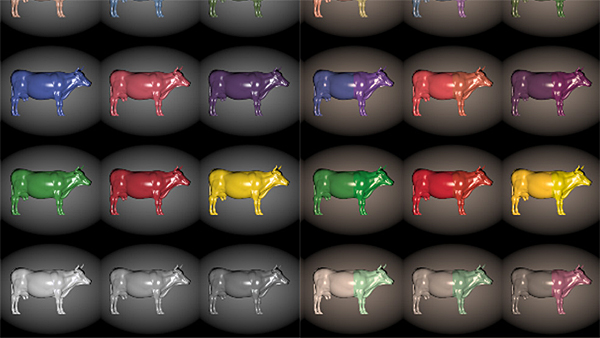How Can Two Objects Match in One Lighting and Not Match in Another?
Metamerism. A simple, one-word answer. Metamerism describes the phenomenon of metameric color matches. Isomeric (or identical) color matches occur when two stimuli have identical spectral power distributions (identical emission or reflection of light at every visible wavelength). However, since we only have three types of cone photoreceptors, it is possible for two stimuli to match in color without having identical spectral power distributions. As long as the integrated responses of the three cone types are equal, then the stimuli will match in color. Basically, a little less energy at one wavelength can be compensated for at other wavelengths. When color matches happen despite differences in spectral power distributions (or spectral reflectance of objects), they are called metameric color matches and they exhibit the property of metamerism.
Isomeric color matches hold for any observer and any viewing conditions. The two objects are physically identical and we cannot perceive a difference between them as long as they are viewed together under the same conditions. However, metameric color matches (sometimes called conditional matches) depend on both the illumination and the observer. Changes in the illumination can highlight, or diminish, certain differences in spectral reflectance properties and make them more or less pronounced. Likewise different observers have slightly different visual sensitivities and a nice metameric match for me might look like a significant mismatch for you. On top of that, our visual systems change as we age, so a match for me today might not have looked like a match to me 30 years ago.
Metamerism is one of the most fundamental concepts of color science and presents us with many opportunities (such as trichromatic color reproduction systems) and many challenges (such as materials that change appearance with changes in lighting or observer). It is an endlessly fascinating topic and it is interesting to ponder how important it would be in the natural world. Or is it just an artifact of man-made color systems?
![]()
Explore the NEXT TOPIC at this level.
There are no more levels to explore! Congratulations for reaching the top. If you are interested in more, these discussions of OBJECTS fall under the scientific discipline of CHEMISTRY.
Ever wonder ... Why does the moon look large on the horizon, but this doesn't show up in photographs?
Updated: Dec. 31, 2010

